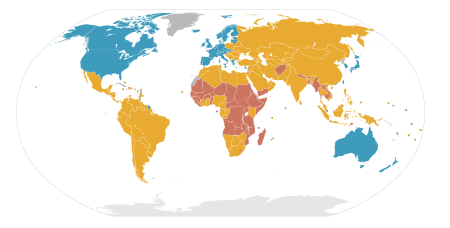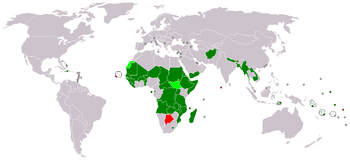Developing country
A developing country (or a low and middle income country (LMIC), less developed country, less economically developed country (LEDC), medium-industrialized country or underdeveloped country) is a country with a less developed industrial base and a low Human Development Index (HDI) relative to other countries.[1] However, this definition is not universally agreed upon. There is also no clear agreement on which countries fit this category.[2][3] A nation's GDP per capita compared with other nations can also be a reference point. In general, the United Nations accepts any country's claim of itself being "developing".
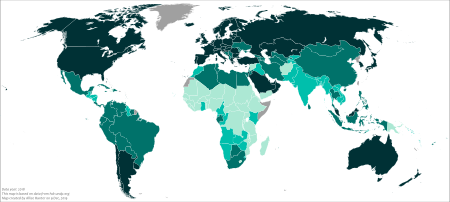
|
0.800–1.000 (very high)
0.700–0.799 (high)
0.550–0.699 (medium) |
0.350–0.549 (low)
Data unavailable |
There are controversies over the use of this term which some feel it is perpetuating an outdated concept of "us" and "them".[4] In 2015, the World Bank declared that the "developing / developed world categorization" is becoming less relevant and that they will phase out the use of that descriptor. Instead, their reports with present data aggregations for regions, and for income groups.[3][5]
The term "developing" describes a currently observed situation and not a changing dynamic or expected direction of progress. Since the late 1990s, developing countries tended to demonstrate higher growth rates than developed countries.[6] Developing countries include, in decreasing order of economic growth or size of the capital market: newly industrialized countries, emerging markets, frontier markets, Least Developed Countries. Therefore, the least developed countries are the poorest of the developing countries.
Developing countries tend to have some characteristics in common. For example, with regards to health risks, they commonly have: low levels of access to safe drinking water, sanitation and hygiene; energy poverty; high levels of pollution (e.g. air pollution, indoor air pollution, water pollution); high proportion of people with tropical and infectious diseases (neglected tropical diseases); high number of road traffic accidents; and generally poor infrastructure. Often, there is also widespread poverty, low education levels, inadequate access to family planning services, corruption at all government levels and a lack of so-called good governance. Effects of global warming (climate change) are expected to impact developing countries more than wealthier countries, as most of them have a high "climate vulnerability".[7]
The Sustainable Development Goals by the United Nations were set up to help overcome many of these problems. Development aid or development cooperation is financial aid given by governments and other agencies to support the economic, environmental, social and political development of developing countries.
Definitions
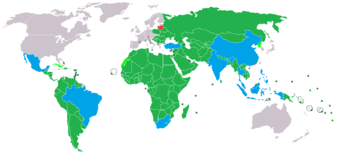
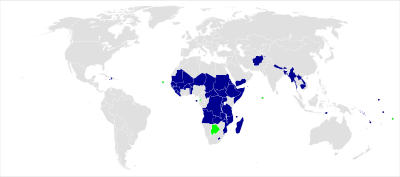
The UN acknowledges that it has "no established convention for the designation of "developed" and "developing" countries or areas".[8][2] According to its so-called M49 standards, published in 1999:
The designations "developed" and "developing" are intended for statistical convenience and do not necessarily express a judgement about the stage reached by a particular country or area in the development process.[9][10]
The UN implies that developing countries are those not on a tightly defined list of developed countries:
There is no established convention for the designation of "developed" and "developing" countries or areas in the United Nations system. In common practice, Japan in Asia, Israel in the Middle East, Canada and the United States in North America, Australia and New Zealand in Oceania, and Europe are considered "developed" regions or areas. In international trade statistics, the Southern African Customs Union is also treated as a developed region and Israel as a developed country; countries emerging from the former Yugoslavia are treated as developing countries; and countries of eastern Europe and of the Commonwealth of Independent States [the former Soviet Union] in Europe are not included under either developed or developing regions.[2]
However, under other criteria, some countries are at an intermediate stage of development, or, as the International Monetary Fund (IMF) put it, following the fall of the Soviet Union, "countries in transition": all those of Central and Eastern Europe (including Central European countries that still belonged to the "Eastern Europe Group" in the UN institutions); the former Soviet Union (USSR) countries in Central Asia (Kazakhstan, Uzbekistan, Kyrgyzstan, Tajikistan and Turkmenistan); and Mongolia. By 2009, the IMF's World Economic Outlook classified countries as advanced, emerging, or developing, depending on "(1) per capita income level, (2) export diversification—so oil exporters that have high per capita GDP would not make the advanced classification because around 70% of its exports are oil, and (3) degree of integration into the global financial system"[11]
Along with the current level of development, countries can also be classified by how much their level of development has changed over a specific period of time.[12]
In the 2016 edition of its World Development Indicators, the World Bank made a decision to no longer distinguish between "developed" and "developing" countries in the presentation of its data, considering the two-category distinction outdated.[13] Instead, the World Bank classifies countries into four groups, based on Gross National Income per capita, re-set each year on July 1. In 2019, the four categories in US dollars were:[13]
- Low income countries: $1,035 or less.
- Lower middle income countries: $1,036 to $4,045.
- Upper middle income countries: $4,046 to $12,535.
- High income countries: $12,535 or more[14]
Measure and concept of development
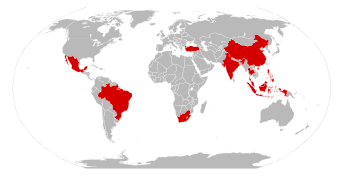
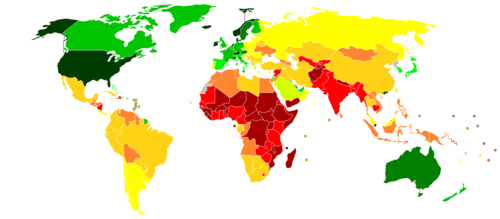
Kofi Annan, former Secretary General of the United Nations, defined a developed country as "one that allows all its citizens to enjoy a free and healthy life in a safe environment".[16]
Development can be measured by economic or human factors. Developing countries are, in general, countries that have not achieved a significant degree of industrialization relative to their populations, and have, in most cases, a medium to low standard of living. There is an association between low income and high population growth.[17] The development of a country is measured with statistical indexes such as income per capita (per person), gross domestic product per capita, life expectancy, the rate of literacy, freedom index and others. The UN has developed the Human Development Index (HDI), a compound indicator of some of the above statistics, to gauge the level of human development for countries where data is available. The UN had set Millennium Development Goals from a blueprint developed by all of the world's countries and leading development institutions, in order to evaluate growth.[18] These goals ended in 2015, to be superseded by the Sustainable Development Goals.
The concept of the developing nation is found, under one term or another, in numerous theoretical systems having diverse orientations — for example, theories of decolonization, liberation theology, Marxism, anti-imperialism, modernization, social change and political economy.
Another important indicator is the sectoral changes that have occurred since the stage of development of the country. On an average, countries with a 50% contribution from the secondary sector (manufacturing) have grown substantially. Similarly countries with a tertiary sector stronghold also see a greater rate of economic development.
Terms used to classify levels of development
There are several terms used to classify countries into rough levels of development. Classification of any given country differs across sources, and sometimes these classifications or the specific terminology used is considered disparaging. Use of the term "market" instead of "country" usually indicates specific focus on the characteristics of the countries' capital markets as opposed to the overall economy.
- Developed countries and developed markets
- Developing countries include in decreasing order of economic growth or size of the capital market:
- Newly industrialized countries[19][20][21][22]
- Emerging markets
- Frontier markets
- Least developed countries
Developing countries can also be categorized by geography:
Other classifications include:
- Heavily indebted poor countries, a definition by a program of the IMF and World Bank
- Transition economy, moving from a centrally planned to market-driven economy
- Multi-dimensional clustering system: with the understanding that different countries have different development priorities and levels of access to resources and institutional capacities[23] and to offer a more nuanced understanding of developing countries and their characteristics, scholars have categorised them into five distinct groups based on factors such as levels of poverty and inequality, productivity and innovation, political constraints and dependence on external flows.[24][25]
Criticisms and other terms
There is criticism for using the term "developing country". The term could imply inferiority of this kind of country compared with a developed country.[26] It could assume a desire to develop along the traditional Western model of economic development which a few countries, such as Cuba and Bhutan, choose not to follow.[27] Alternative measurements such as gross national happiness have been suggested as important indicators.
%2C_2018.jpg)
One of the early criticism that questioned the use of the terms "developing" and "underdeveloped" countries, was voiced in 1973 by prominent historian and academic Walter Rodney who compared the economic, social and political parameters between the United States and countries in Africa and Asia.[28]
There is "no established convention" for defining "developing country".[8] According to economist and sustainable development expert Jeffrey Sachs, the current divide between the developed and developing world is largely a phenomenon of the 20th century.[29] The late global health expert Hans Rosling has argued against the terms, calling the concept "outdated".[4]
To moderate the euphemistic aspect of the word "developing", international organizations have started to use the term less economically developed country for the poorest nations—which can, in no sense, be regarded as developing. This highlights that the standard of living across the entire developing world varies greatly. Other terms sometimes used are less developed countries, underdeveloped nations, low and middle income countries (LMICs) and non-industrialized nations. Conversely, developed countries, most economically developed countries, industrialized nations are the opposite end of the spectrum.
At the development level, anthropologist and researcher Jason Hickel has challenged the narrative that the rich countries of the OECD help the poor countries develop their economies and eradicate poverty. Hickel states that the rich countries "aren’t developing poor countries; poor countries are developing rich ones."[30]
In 2015, the World Bank declared that the "developing / developed world categorization" is becoming less relevant, due to worldwide improvements in indices such as child mortality rates, fertility rates and extreme poverty rates.[3] Accordingly, World Bank is phasing out use of that descriptor. Instead, the reports by Worldbank (such as the World Development Indicators (WDI) and the Global Monitoring Report) now include data aggregations for the whole world, for regions, and for income groups - but not for the “developing world”.[3][5]
Third World
Over the past few decades since the fall of the Soviet Union and the end of the Cold War, the term Third World has been used interchangeably with developing countries, but the concept has become outdated in recent years as it no longer represents the current political or economic state of the world. The three-world model arose during the Cold War to define countries aligned with NATO (the First World), the Communist Bloc (the Second World, although this term was less used), or neither (the Third World). Strictly speaking, "Third World" was a political, rather than an economic, grouping.[26]
Global South
The term "Global South" began to be used more widely since about 2004.[31][32] It can also include poorer "southern" regions of wealthy "northern" countries.[33] The Global South refers to these countries' "interconnected histories of colonialism, neo-imperialism, and differential economic and social change through which large inequalities in living standards, life expectancy, and access to resources are maintained".[34]
Common challenges
| Development economics |
|---|
 |
| Economies by region |
| Economic growth theories |
|
| Fields and subfields |
| Lists |
|
Most developing countries have these criteria in common:[35][36]
- High levels of poverty – measured based on GNI per capita averaged over three years. For example, if the GNI per capita is less than US $1,025 (as of 2018) the country is regarded as a least developed country.[36]
- Human resource weakness (based on indicators of nutrition, health, education and adult literacy).
- Economic vulnerability (based on instability of agricultural production, instability of exports of goods and services, economic importance of non-traditional activities, merchandise export concentration, handicap of economic smallness, and the percentage of population displaced by natural disasters).
Urban slums
According to UN-Habitat, around 33% of the urban population in the developing world in 2012, or about 863 million people, lived in slums.[37] In 2012, the proportion of urban population living in slums was highest in Sub-Saharan Africa (62%), followed by South Asia (35%), Southeast Asia (31%) and East Asia (28%).[37]:127
The UN-Habitat reports that 43% of urban population in developing countries and 78% of those in the least developed countries are slum dwellers.[38]
Slums form and grow in different parts of the world for many different reasons. Causes include rapid rural-to-urban migration, economic stagnation and depression, high unemployment, poverty, informal economy, forced or manipulated ghettoization, poor planning, politics, natural disasters and social conflicts.[39][40][41] For example, as populations expand in poorer countries, rural people are moving to cities in an extensive urban migration that is resulting in the creation of slums.[42]
In some cities, especially in countries in Southern Asia and Sub-Saharan Africa, slums are not just marginalized neighborhoods holding a small population; slums are widespread, and are home to a large part of urban population. These are sometimes called "slum cities".[43]
Violence against women
Several forms of violence against women are more prevalent in developing countries than in other parts of the world. For example, dowry violence and bride burning is associated with Bangladesh, and Nepal. Acid throwing is also associated with these countries, as well as in Southeast Asia, including Cambodia. Honor killing is associated with the Middle East and South Asia. Marriage by abduction is found in Ethiopia, Central Asia and the Caucasus. Abuse related to payment of bride price (such as violence, trafficking and forced marriage) is linked to parts of Sub-Saharan Africa and Oceania.[44][45]
Female genital mutilation (FGM) is another form of violence against women which is still occurring in many developing countries. It is found mostly in Africa, and to a lesser extent in the Middle East and some other parts of Asia. Developing countries with the highest rate of women who have been cut are Somalia (with 98% of women affected), Guinea (96%), Djibouti (93%), Egypt (91%), Eritrea (89%), Mali (89%), Sierra Leone (88%), Sudan (88%), Gambia (76%), Burkina Faso (76%), and Ethiopia (74%).[46] Due to globalization and immigration, FGM is spreading beyond the borders of Africa and Middle East, to countries such as Australia, Belgium, Canada, France, New Zealand, the U.S., and UK.[47]
The Istanbul Convention prohibits female genital mutilation (Article 38).[48] As of 2016, FGM has been legally banned in many African countries.[49]
Public health
People in developing countries usually have a lower life expectancy than people in developed countries. The burden of infectious diseases, maternal mortality, child mortality and infant mortality are typically substantially higher.
Undernutrition is more common in developing countries.[50] Certain groups have higher rates of undernutrition, including women—in particular while pregnant or breastfeeding—children under five years of age, and the elderly. Malnutrition in children and stunted growth of children is the cause for more than 200 million children under five years of age in developing countries not reaching their developmental potential.[51] About 165 million children were estimated to have stunted growth from malnutrition in 2013.[52] In some developing countries, overnutrition in the form of obesity is beginning to present within the same communities as undernutrition.[53]
The following list shows the further significant environmentally-related causes or conditions, as well as certain diseases with a strong environmental component:[54]
- Illness/disease (malaria, tuberculosis, AIDS, etc.): Illness imposes high and regressive cost burdens on families in developing countries.[55]
- Tropical and infectious diseases (neglected tropical diseases)
- Unsafe drinking water, poor sanitation and hygiene
- Indoor air pollution in developing nations
- Pollution (e.g. air pollution, water pollution)
- Motor vehicle collisions
- Unintentional poisoning
- Non communicable diseases and weak healthcare systems
Water, sanitation, hygiene (WASH)
Access to water, sanitation and hygiene (WASH) services is at very low levels in many developing countries. In 2015 the World Health Organization (WHO) estimated that "1 in 3 people, or 2.4 billion, are still without sanitation facilities" while 663 million people still lack access to safe and clean drinking water.[56][57] The estimate in 2017 by JMP states that 4.5 billion people currently do not have safely managed sanitation.[58] The majority of these people live in developing countries.
About 892 million people, or 12 per cent of the global population, practiced open defecation instead of using toilets in 2016.[58] Seventy-six per cent (678 million) of the 892 million people practicing open defecation in the world live in just seven countries.[58] Countries with a high number of people openly defecating are India (348 million), followed by Nigeria (38.1 million), Indonesia (26.4 million), Ethiopia (23.1 million), Pakistan (19.7 million), Niger (14.6 million) and Sudan (9.7 million).[59]
Sustainable Development Goal 6 is one of 17 Sustainable Development Goals established by the UN in 2015. It calls for clean water and sanitation for all people. This is particularly relevant for people in developing countries.
Energy
In 2009, about 1.4 billion of people in the world lived without electricity. 2.7 billion relied on wood, charcoal, and dung (dry animal dung fuel) for home energy requirements. This lack of access to modern energy technology limits income generation, blunts efforts to escape poverty, affects people's health due to indoor air pollution, and contributes to global deforestation and climate change. Small-scale renewable energy technologies and distributed energy options, such as onsite solar power and improved cookstoves, offer rural households modern energy services.[60]
Renewable energy can be particularly suitable for developing countries. In rural and remote areas, transmission and distribution of energy generated from fossil fuels can be difficult and expensive. Producing renewable energy locally can offer a viable alternative.[61]
Renewable energy can directly contribute to poverty alleviation by providing the energy needed for creating businesses and employment. Renewable energy technologies can also make indirect contributions to alleviating poverty by providing energy for cooking, space heating, and lighting.[62]
Kenya is the world leader in the number of solar power systems installed per capita.[63]
Pollution
Indoor air pollution
Indoor air pollution in developing nations is a major health hazard.[64] A major source of indoor air pollution in developing countries is the burning of biomass. Three billion people in developing countries across the globe rely on biomass in the form of wood, charcoal, dung, and crop residue, as their domestic cooking fuel.[65] Because much of the cooking is carried out indoors in environments that lack proper ventilation, millions of people, primarily poor women and children face serious health risks.
Globally, 4.3 million deaths were attributed to exposure to IAP in developing countries in 2012, almost all in low and middle income countries. The South East Asian and Western Pacific regions bear most of the burden with 1.69 and 1.62 million deaths, respectively. Almost 600,000 deaths occur in Africa.[66] An earlier estimate from 2000 but the death toll between 1.5 million and 2 million deaths.[67]
Finding an affordable solution to address the many effects of indoor air pollution is complex. Strategies include improving combustion, reducing smoke exposure, improving safety and reducing labor, reducing fuel costs, and addressing sustainability.[68]
Water pollution
Water pollution is a major problem in many developing countries. It requires ongoing evaluation and revision of water resource policy at all levels (international down to individual aquifers and wells). It has been suggested that water pollution is the leading worldwide cause of death and diseases,[69][70] and that it accounts for the deaths of more than 14,000 people daily.[70]
India and China are two countries with high levels of water pollution: An estimated 580 people in India die of water pollution related illness (including waterborne diseases) every day.[71] About 90 percent of the water in the cities of China is polluted.[72] As of 2007, half a billion Chinese had no access to safe drinking water.[73]
Further details of water pollution in several countries, including many developing countries:
Climate change
The effects of global warming such as extreme weather events, droughts, floods, biodiversity loss, disease and sea level rise are dangerous for humans and the environment.[74] Developing countries are the least able to adapt to climate change (and are therefore called "highly climate vulnerable") due to their relatively low levels of wealth, technology, education, infrastructure and access to resources. This applies to many countries in Sub-Saharan Africa or Small Island Developing States. Some of those island states are likely to face total inundation.[75] Fragile states or failed states like Afghanistan, Haiti, Myanmar, Sierra Leone, and Somalia are among the worst affected.
Climate vulnerability has been quantified in the Climate Vulnerability Monitor reports of 2010 and 2012. Climate vulnerability in developing countries occurs in four impact areas: health, extreme weather, habitat loss, and economic stress.[74][7] A report by the Climate Vulnerability Monitor in 2012 estimated that climate change causes 400,000 deaths on average each year, mainly due to hunger and communicable diseases in developing countries.[76]:17 These effects are most severe for the world's poorest countries.
A changing climate also results in economic burdens. The economies in Least Developed Countries have lost an average of 7% of their gross domestic product for the year 2010, mainly due to reduced labor productivity.[76]:14 Rising sea levels cost 1% of GDP to the least developed countries in 2010 – 4% in the Pacific – with 65 billion dollars annually lost from the world economy.[74] Another example is the impact on fisheries: approximately 40 countries are acutely vulnerable to the impact of greenhouse gas emissions on fisheries. Developing countries with large fisheries sectors are particularly affected.[76]:279
In many cases, developing countries produce only small quantities of greenhouse gas emissions per capita but are very vulnerable to the negative effects of global warming.[75] Such countries include Comoros, The Gambia, Guinea-Bissau, São Tomé and Príncipe, Solomon Islands and Vanuatu - they have been called "forced riders" as opposed to the "free riders".[7] Internationally there is recognition of this issue, which is known under the term "climate justice". It has been a key topic at the United Nations Climate Change Conferences (COP).
During the Cancún COP16 in 2010, donor countries promised an annual $100 billion by 2020 through the Green Climate Fund for developing countries to adapt to climate change. However, concrete pledges by developed countries have not been forthcoming.[77][78] Emmanuel Macron (President of France) said at the 2017 United Nations Climate Change Conference in Bonn (COP 23): "Climate change adds further injustice to an already unfair world".[79]
Climate stress is likely to add to existing migration patterns in developing countries and beyond but is not expected to generate entirely new flows of people.[80]:110 A report by the World Bank in 2018 estimated that around 143 million people in three regions (Sub-Saharan Africa, South Asia, and Latin America) could be forced to move within their own countries to escape the slow-onset impacts of climate change. They will migrate from less viable areas with lower water availability and crop productivity and from areas affected by rising sea level and storm surges.[81]
Economic development and climate are inextricably linked, particularly around poverty, gender equality, and energy.[82] Tackling climate change will only be possible if the Sustainable Development Goals (SDGs) are met (goal number 13 is on climate action).[82]
Population growth

Over the last few decades, global population growth has largely been driven by developing countries, which often have higher birth rates (higher fertility rate) than developed countries. According to the United Nations, family planning can help to slow population growth and decrease poverty in these countries.[17]
The violent herder–farmer conflicts in Nigeria, the march 2019 attacks against Fulani herders in Mali, the Sudanese nomadic conflicts and other conflicts in the countries of the Sahel region have been exacerbated by climate change, land degradation, and population growth.[83][84][85] Droughts and food shortages have been also linked to the Northern Mali conflict.[86][87]
Others
- Increased and intensified industrial and agricultural production and emission of toxic chemicals directly into the soil, air, and water.
- Unsustainable use of energy resources.
- High dependency on natural resources for livelihood, leading to unsustainable exploitation or depletion of those resources
- Child Marriage
- Political instability[88]
- Political corruption[89]
- Indebtedness (see Debt of developing countries)
- Under performing civil service (see Civil service reform in developing countries)
- Food insecurity
- Illiteracy
- Unemployment
The economies of many developing nations are tried to primary products and a majority of their exports go to advanced nations. When advanced nations encounter economic downturns, they can quickly transmitted to their developing country trading partners as seen in global economic downturn of 2008–2009.
Opportunities
Country lists
Developing countries according to International Monetary Fund
The following are considered developing economies according to the International Monetary Fund's World Economic Outlook Database, October 2018.[92][93]



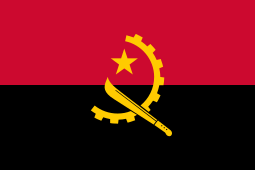
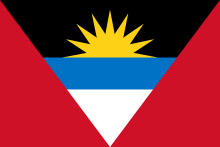




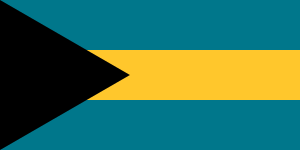




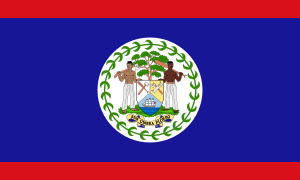
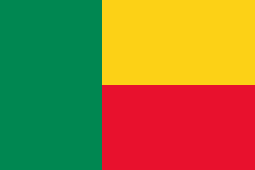

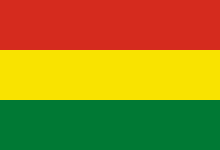

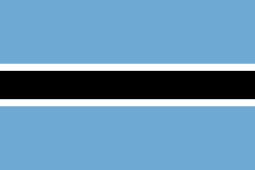

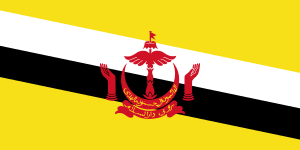

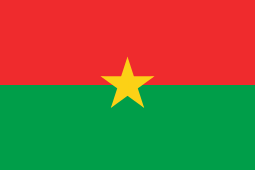
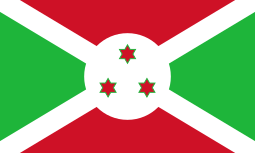



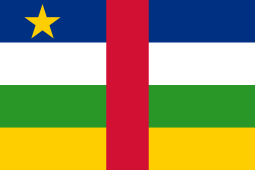




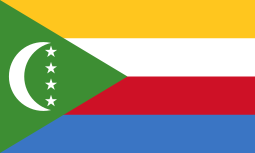
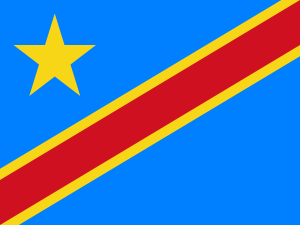
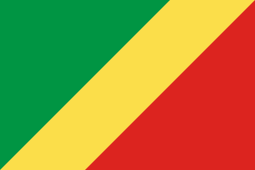



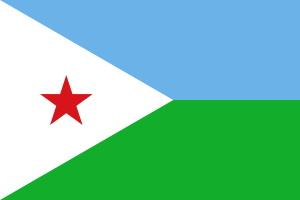
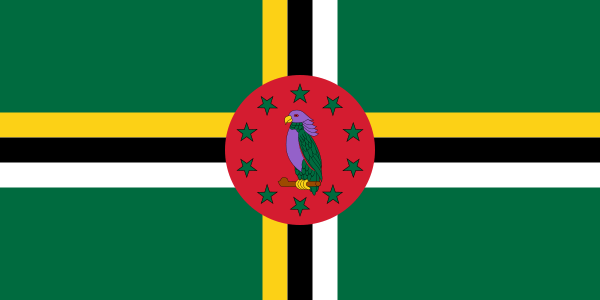

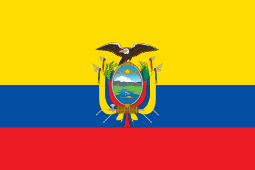

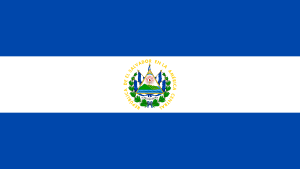
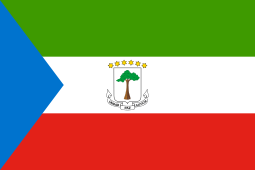
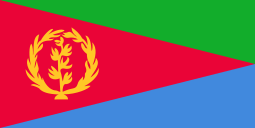
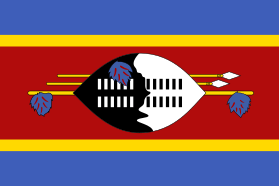
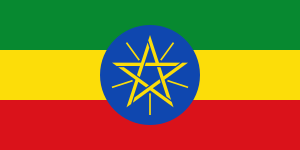
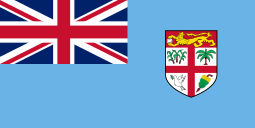
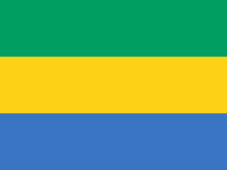
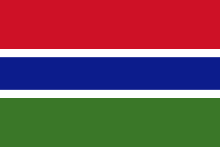

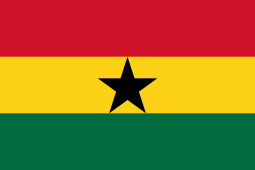

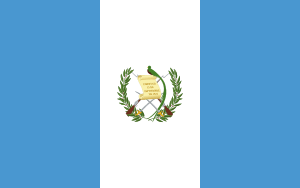

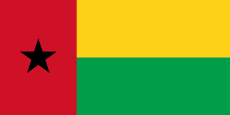
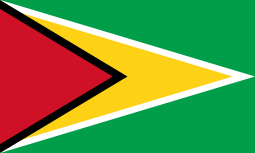
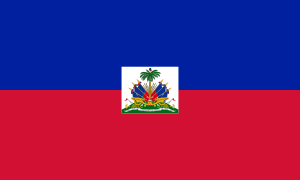
.svg.png)





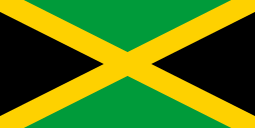
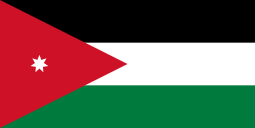

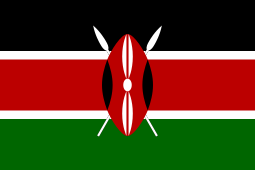
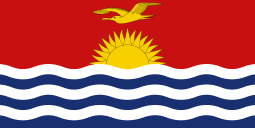

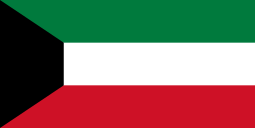
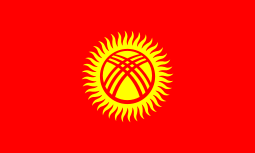
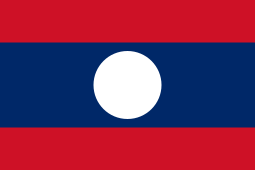


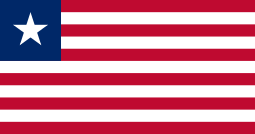
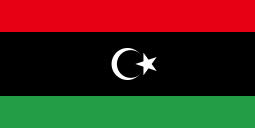
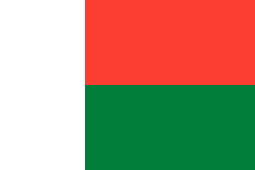
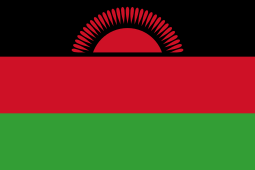

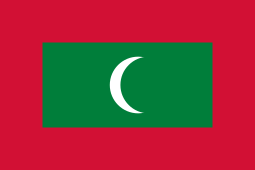


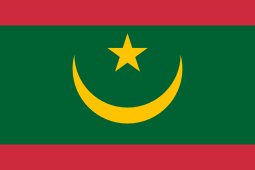


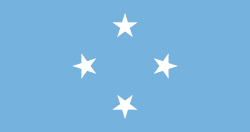




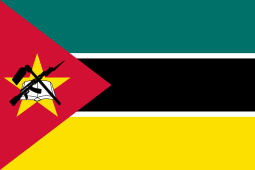

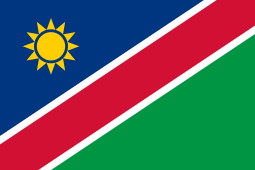


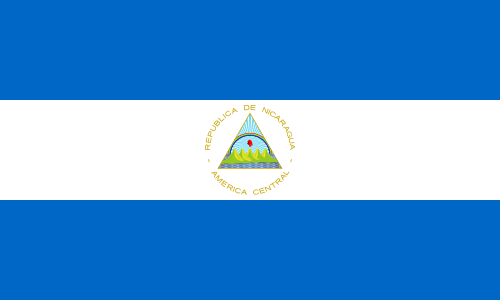
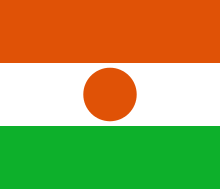


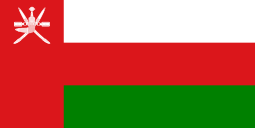



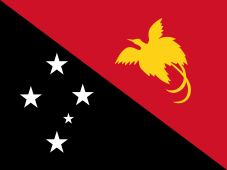







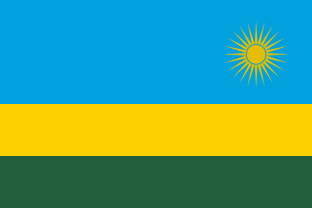
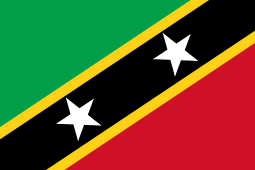



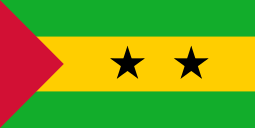

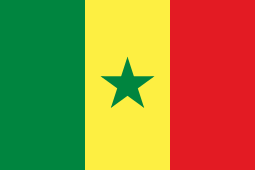



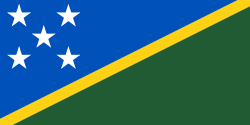
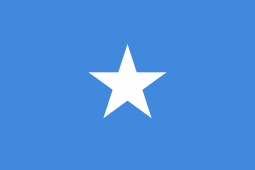

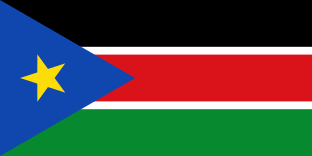


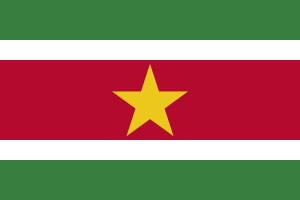

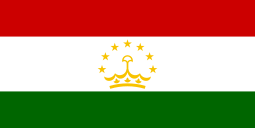
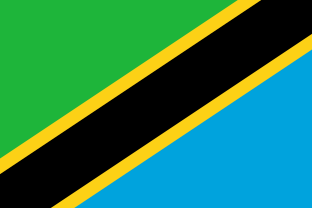


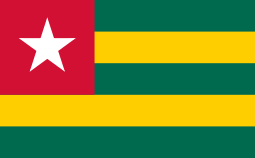
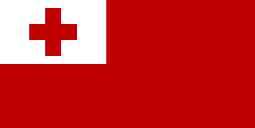
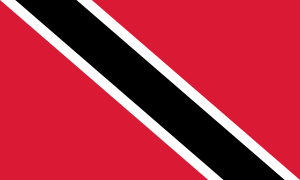
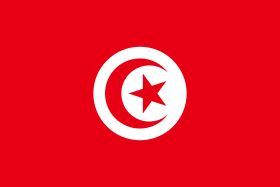

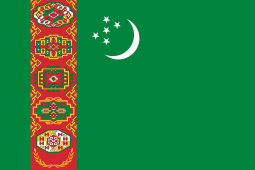
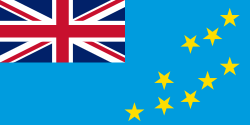
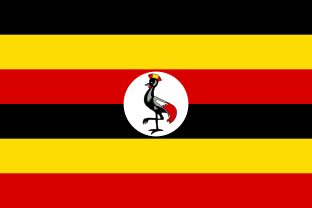


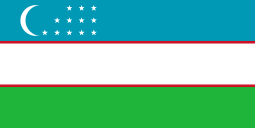
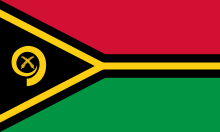


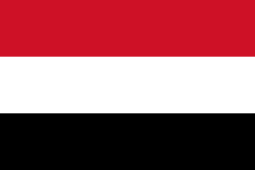
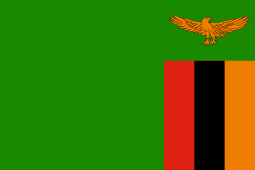
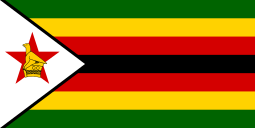
Countries not listed by IMF
Countries and regions that are graduated developed economies
The following, including the Four Asian Tigers and new Eurozone European countries, were considered developing countries and regions until the '90s, and are now listed as advanced economies (developed countries and regions) by the IMF. Time in brackets is the time to be listed as advanced economies.







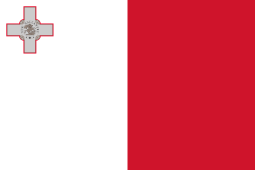





Three economies lack data before being listed as advanced economies. Because of the lack of data, it is difficult to judge whether they were advanced economies or developing economies before being listed as advanced economies.


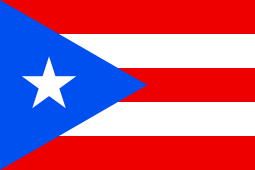
Newly industrialized countries
Ten countries belong to the "newly industrialized country" classification. They are countries whose economies have not yet reached a developed country's status but have, in a macroeconomic sense, outpaced their developing counterparts:
BRICS countries
Five countries belong to the "emerging markets" groups and are together called the BRICS countries:





See also
References
- O'Sullivan A, Sheffrin SM (2003). Economics: Principles in Action. Upper Saddle River, New Jersey 07458: Pearson Prentice Hall. p. 471. ISBN 978-0-13-063085-8.CS1 maint: location (link)
- "Composition of macro geographical (continental) region". United Nation s. Archived from the original on 6 March 2010.
- "Should we continue to use the term "developing world"?". World Bank blogs. 16 November 2015. Retrieved 5 March 2020.
- Rosling, Hans; Rosling, Ola; Rosling Rönnlund, Anna (2018). "Chapter 1: The Gap Instinct". Factfulness: Ten Reasons We're Wrong About The World - And Why Things Are Better Than You Think. Sceptre. p. 353. ISBN 978-1-250-10781-7. Retrieved 5 March 2020.
- "The 2016 edition of World Development Indicators is out: three features you won't want to miss". blogs.worldbank.org. Retrieved 5 March 2020.
- Korotayev A, Zinkina J (2014). "On the structure of the present-day convergence". Campus-Wide Information Systems. 31 (2/3): 139–152. doi:10.1108/CWIS-11-2013-0064.
- Althor G, Watson JE, Fuller RA (February 2016). "Global mismatch between greenhouse gas emissions and the burden of climate change". Scientific Reports. 6 (1): 20281. doi:10.1038/srep20281. PMC 4742864. PMID 26848052.
- "Millennium Development Indicators: World and regional groupings". United Nations Statistics Division. 2003. Note b. Archived from the original on 10 February 2005. Retrieved 13 May 2017.
- "Standard Country and Area Codes Classifications (M49): Developed Regions". United Nations Statistics Division. Archived from the original on 11 July 2017. Retrieved 13 May 2017.
- "United Nations Statistics Division- Standard Country and Area Codes Classifications (M49)". Unstats.un.org. Retrieved 15 January 2014.
- "Q. How does the WEO categorize advanced versus emerging and developing economies?". International Monetary Fund. Retrieved 20 July 2009.
- "Least Developed Countries Report 2012 - Unctad" (PDF).
- Fantom N, Khokhar T, Purdie E (15 April 2016). "The 2016 edition of World Development Indicators is out: three features you won't want to miss". The Data Blog. The World Bank. Retrieved 22 October 2016.
- "World Bank Country and Lending Groups – World Bank Data Help Desk". datahelpdesk.worldbank.org. Retrieved 1 July 2020.
- Based on the IMF data. If no data was available for a country from IMF, data from the World Bank is used.
- "Press Release No. G/05/2000". United Nations. 12 February 2000. Archived from the original on 8 August 2009.
- "Population and poverty". www.unfpa.org. Retrieved 21 September 2018.
- "United Nations Millennium Development Goals". www.un.org. Retrieved 28 March 2018.
- Bożyk P (2006). "Newly Industrialized Countries". Globalization and the Transformation of Foreign Economic Policy. Ashgate Publishing, Ltd. ISBN 978-0-7546-4638-9.
- Guillén MF (2003). "Multinationals, Ideology, and Organized Labor". The Limits of Convergence. Princeton University Press. ISBN 978-0-691-11633-4.
- Waugh D (2000). "Manufacturing industries (chapter 19), World development (chapter 22)". Geography, An Integrated Approach (3rd ed.). Nelson Thornes Ltd. pp. 563, 576–579, 633, and 640. ISBN 978-0-17-444706-1.
- Mankiw NG (2007). Principles of Economics (4th ed.). ISBN 978-0-324-22472-6.
- Koch S (1 June 2015). "From Poverty Reduction to Mutual Interests? The Debate on Differentiation in EU Development Policy" (PDF). Development Policy Review. 33 (4): 479–502. doi:10.1111/dpr.12119. ISSN 1467-7679.
- Vázquez ST, Sumner A (December 2013). "Revisiting the Meaning of Development: A Multidimensional Taxonomy of Developing Countries". The Journal of Development Studies. 49 (12): 1728–1745. doi:10.1080/00220388.2013.822071.
- Taeihagh A (2017). "Crowdsourcing, Sharing Economies and Development". Journal of Developing Societies. 33 (2): 191–222. arXiv:1707.06603. doi:10.1177/0169796x17710072.
- Silver, Marc (4 January 2015). "If You Shouldn't Call It The Third World, What Should You Call It?". NPR. Retrieved 5 March 2020.
- Ura K. "The Bhutanese development story" (PDF). Retrieved 17 September 2012.
- Rodney, Walter (1973). How Europe Underdeveloped Africa (PDF). Bogle-L'Ouverture Publications, London and Tanzanian Publishing House, Dar-Es-Salaam. p. 25.
- Sachs, Jeffrey (2005). The End of Poverty. New York, New York: The Penguin Press. ISBN 1-59420-045-9.
- Hickel, Jason (14 January 2017). "Aid in Reverse: How Poor Countries Develop Rich Countries". The Guardian.
- Pagel, Heikie; Ranke, Karen; Hempel, Fabian; Köhler, Jonas (11 July 2014). "The Use of the Concept 'Global South' in Social Science & Humanities". Humboldt University of Berlin. Retrieved 6 October 2016.
- Mitlin D, Satterthwaite D (2013). Urban Poverty in the Global South: Scale and Nature. Routledge. p. 13. ISBN 9780415624664.
- Braveboy-Wagner, Jacqueline Anne (2003). The Foreign Policies of the Global South: Rethinking Conceptual Frameworks. Lynne Rienner Publishers. p. 11. ISBN 9781588261755.
- Dados N, Connell R (1 January 2012). "the global south". Contexts. 11 (1): 12–13. doi:10.1177/1536504212436479. JSTOR 41960738.
- "Criteria For Identification Of LDCs". United Nations Department of Economic and Social Affairs, Development Policy and Analysis Division. 4 March 2010. Retrieved 2 March 2018.
- UN-OHRLLS Criteria for Identification and Graduation of LDCs.
- "State of the World's Cities Report 2012/2013: Prosperity of Cities" (PDF). UNHABITAT. Retrieved 4 October 2013.
- The challenge of slums – Global report on Human Settlements Archived 21 September 2013 at the Wayback Machine, United Nations Habitat (2003)
- "What are slums and why do they exist?" (PDF). Kenya: UN-Habitat. April 2007. Archived from the original (PDF) on 6 February 2011.
- Patton CV (1988). Spontaneous Shelter: International Perspectives and Prospects. Philadelphia: Temple University Press. ISBN 978-0-87722-507-2.
- "Assessing Slums in the Development Context" (PDF). United Nations Habitat Group. 2011. Archived from the original (PDF) on 5 January 2014. Retrieved 16 September 2013.
- Westra R (2011). "Renewing Socialist Development in the Third World". Journal of Contemporary Asia. 41 (4): 519–543. doi:10.1080/00472336.2011.610612.
- Slum Cities and Cities with Slums" States of the World's Cities 2008/2009. UN-Habitat.
- "Papua New Guinea: police cite bride price major factor in marital violence". Island Business. 21 November 2011. Archived from the original on 18 February 2015. Retrieved 6 August 2014 – via Violence is not our Culture.
- "An exploratory study of bride price and domestic violence in Bundibugyo District, Uganda" (PDF). Centre for Human Rights Advancement (CEHURA) and South African Medical Research Council. April 2012. Archived from the original (PDF) on 17 July 2013. Retrieved 6 August 2014.
- UNICEF (22 July 2013). Female Genital Mutilation/Cutting: A statistical overview and exploration of the dynamics of change (PDF). UNICEF. Retrieved 18 November 2013.
- Nussbaum M (1999). "Judging other cultures: the case of genital mutilation". In Nussbaum M (ed.). Sex & social justice. New York: Oxford University Press. pp. 120–121. ISBN 978-0195110326.
- Council of Europe Convention on preventing and combating violence against women and domestic violence. 12 April 2011. Retrieved 8 October 2017.
- Citations:
- Lyons, Kate (24 November 2015). "The Gambia bans female genital mutilation". The Guardian. Retrieved 9 May 2016.
- Richards, Kimberly (3 June 2015). "History has been made: female genital mutilation banned in Nigeria". A Plus. Retrieved 9 May 2016.
- UNFPA (December 2015). Female genital mutilation (FGM) frequently asked questions. United Nations Population Fund. Retrieved 9 May 2016.
- Young L (2002). World Hunger Routledge Introductions to Development. p. 20. ISBN 9781134774944.
- Grantham-McGregor, Sally et al., the International Child Development Steering Group. “Developmental Potential in the First 5 Years for Children in Developing Countries.” Lancet 369.9555 (2007): 60–70. PMC. Web. 28 Nov. 2014.
- Bhutta ZA, Das JK, Rizvi A, Gaffey MF, Walker N, Horton S, Webb P, Lartey A, Black RE (August 2013). "Evidence-based interventions for improvement of maternal and child nutrition: what can be done and at what cost?". Lancet. 382 (9890): 452–477. doi:10.1016/s0140-6736(13)60996-4. PMID 23746776.
- "Progress For Children: A Report Card On Nutrition" (PDF). UNICEF.
- "Environment and health in developing countries". Priority environment and health risks. World Health Organization. 8 September 2016.
- Russel S. The economic burden of illness for households in developing countries: a review of studies focusing on malaria, tuberculosis, and human immunodeficiency virus/acquired immunodeficiency syndrome. Am J Trop Med Hyg 2004
- "Key facts from JMP 2015 report". World Health Organization. Retrieved 17 November 2017.
- "WHO | Lack of sanitation for 2.4 billion people is undermining health improvements". www.who.int. Retrieved 17 November 2017.
- WHO and UNICEF (2017) Progress on Drinking Water, Sanitation and Hygiene: 2017 Update and SDG Baselines. Geneva: World Health Organization (WHO) and the United Nations Children’s Fund (UNICEF), 2017
- "People practicing open defecation (% of population) - Indonesia, Nigeria, Niger, Ethiopia, Sudan, India, Pakistan". data.worldbank.org. The World Bank. Retrieved 15 October 2019.
- Sovacool BK (October 2012). "Energy. Deploying off-grid technology to eradicate energy poverty". Science. 338 (6103): 47–8. doi:10.1126/science.1222307. PMID 23042871.
- Power for the People Archived 2012-03-30 at the Wayback Machine p. 3.
- Energy for Development: The Potential Role of Renewable Energy in Meeting the Millennium Development Goals Archived 27 May 2008 at the Wayback Machine pp. 7-9.
- "Archived copy". Archived from the original on 5 November 2013. Retrieved 30 April 2018.CS1 maint: archived copy as title (link)
- Bruce N, Perez-Padilla R, Albalak R (2000). "Indoor air pollution in developing countries: a major environmental and public health challenge". Bulletin of the World Health Organization. 78 (9): 1078–92. PMC 2560841. PMID 11019457.
- Duflo E, Greenstone M, Hanna R (2008). "Indoor air pollution, health and economic well-being". S.A.P.I.EN.S. 1 (1).
- "Burden of disease from Indoor Air Pollution for 2012" (PDF). WHO. 24 March 2014. Retrieved 28 March 2014.
- Ezzati M, Kammen DM (November 2002). "The health impacts of exposure to indoor air pollution from solid fuels in developing countries: knowledge, gaps, and data needs". Environmental Health Perspectives. 110 (11): 1057–68. doi:10.1289/ehp.021101057. PMC 1241060. PMID 12417475.
- Duflo E, Greenstone M, Hanna R (2008). "Indoor air pollution, health and economic well-being". S.A.P.I.EN.S. 1 (1).
- Pink DH (19 April 2006). "Investing in Tomorrow's Liquid Gold". Yahoo. Archived from the original on 23 April 2006.
- West L (26 March 2006). "World Water Day: A Billion People Worldwide Lack Safe Drinking Water". About.com.
- "An overview of diarrhea, symptoms, diagnosis and the costs of morbidity" (PDF). CHNRI. 2010. Archived from the original (PDF) on 12 May 2013.
- "China says water pollution so severe that cities could lack safe supplies". Chinadaily.com.cn. June 7, 2005.
- Kahn J, Yardley J (26 August 2007). "As China Roars, Pollution Reaches Deadly Extremes". New York Times.
- "Climate vulnerability monitor 2010: the state of the climate crisis - Documents & Publications - Professional Resources". PreventionWeb.net. Retrieved 26 June 2013.
- "Australia, the US and Europe are climate 'free-riders': it's time to step up". The Conversation (Australia edition). Retrieved 4 May 2018.
- Climate vulnerability monitor : a guide to the cold calculus of a hot planet. DARA, Climate Vulnerable Forum (2nd ed.). [Madrid]: DARA. 2012. ISBN 9788461605675. OCLC 828337356.CS1 maint: others (link)
- "Climate finance is in "a terrible sense of limbo", says IIED expert Saleemul Huq". D+C. Archived from the original on 12 October 2012.
- Müller B (2008). International Adaptation Finance: The Need for an Innovative and Strategic Approach 4 (Oxford Institute for Energy Studies, Working Paper) (PDF). Oxford: Oxford Institute for Energy Studies. ISBN 978-1-901795-76-9. Archived from the original (PDF) on 29 February 2012. Retrieved 11 October 2014.
- Damian Carrington, "Climate change will determine humanity's destiny, says Angela Merkel", The Guardian, 15 November 2017 (page visited on 15 November 2017).
- The World Bank, "Part One: Chapter 2: Reducing Human Vulnerability: Helping People Help Themselves" (PDF), Managing social risks: Empower communities to protect themselves, p. 109, WDR 2010.
- Rigaud, Kanta Kumari; de Sherbinin, Alex; Jones, Bryan; Bergmann, Jonas; Clement, Viviane; Ober, Kayly; Schewe, Jacob; Adamo, Susana; McCusker, Brent; Heuser, Silke; Midgley, Amelia. 2018. Groundswell : Preparing for Internal Climate Migration. World Bank, Washington, DC.
- Ansuategi, A; Greño, P; Houlden, V; et al. (May 2015). "The impact of climate change on the achievement of the post-2015 sustainable development goals" (PDF). CDKN & HR Wallingford. Retrieved 20 May 2015.
- "How Climate Change Is Spurring Land Conflict in Nigeria". Time. 28 June 2018.
- "The battle on the frontline of climate change in Mali". BBC News. 22 January 2019.
- "The Deadliest Conflict You've Never Heard of". Foreign Policy. 23 January 2019. Archived from the original on 18 February 2019.
- "The Sahel in flames". The New Humanitarian. 31 May 2019. Retrieved 23 June 2019.
- "Climate change, food shortages, and conflict in Mali". Al-Jazeera. 27 April 2015.
- Edwards, S. "Trade Orientation, Distortions and Growth In Developing Countries." (n.d.): n. pag. 1-37
- Williams, Jeremy (1 July 2007). "Political factors that affect development".
- Harrison A (1996). "Openness and Growth: A Time-series, Cross-country Analysis for Developing Countries". Journal of Development Economics. 48 (2): 419–47. doi:10.1016/0304-3878(95)00042-9.
- Verspoor A. "Pathways to Change: Improving the Quality of Education in Developing Countries". World Bank Discussion Papers. 53.
- "World Economic Outlook, October,2018, pp.134-135" (PDF). Retrieved 31 October 2018.
- "World Economic Outlook, Database—WEO Groups and Aggregates Information, October 2018". Retrieved 31 October 2018.
- "IMF Advanced Economies List. World Economic Outlook, May 1998, p. 134" (PDF). Retrieved 15 January 2014.
- The recognition of Taiwan is disputed; most UN-member states officially recognise the sovereignty of the People's Republic of China over Taiwan, however, some others maintain non-diplomatic relations with the Republic of China. See Foreign relations of Taiwan.
- "World Economic Outlook, April 2001, p.157" (PDF). Retrieved 15 January 2014.
- "World Economic Outlook, April 2007, p.204" (PDF). Retrieved 15 January 2014.
- "World Economic Outlook, April 2008, p.236" (PDF). Retrieved 15 January 2014.
- "World Economic Outlook, April 2009, p.184" (PDF). Retrieved 15 January 2014.
- Velinger, Jan (28 February 2006). "World Bank Marks Czech Republic's Graduation to 'Developed' Status". Radio Prague. Retrieved 22 January 2007.
- "World Economic Outlook, April 2011, p.172" (PDF). Retrieved 15 January 2014.
- "World Economic Outlook, April 2014, p.160" (PDF). Retrieved 21 May 2014.
- "World Economic Outlook, April 2015, p.48" (PDF). Retrieved 11 April 2015.
- "World Economic Outlook, October 2012, p.180" (PDF). Retrieved 4 August 2016.
- "World Economic Outlook, April 2016, p.148" (PDF). Retrieved 25 June 2016.
External links
| Library resources about Developing country |

